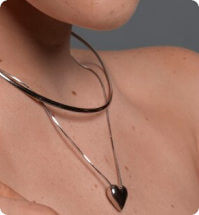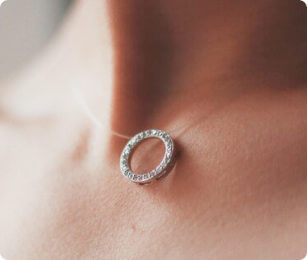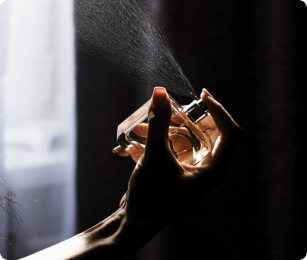An allergic reaction is a complex immune response of the body. In the normal situation, the immune system is activated only when there is an infection by, for example, a virus or bacteria. In an allergic reaction, the situation is slightly different. Your body then reacts in an exaggerated way to a normal, harmless stimulus. This can lead to a range of (allergic) symptoms. You may also experience symptoms of your skin. An allergic skin reaction has several causes that differ slightly from one another. This distinction is important for both diagnosis and treatment. In short: there is plenty to tell about allergic skin reactions. Read on quickly.

Different types of allergic skin reactions
An allergic reaction is an ‘exaggerated’ response of the body’s immune system. The body reacts with an overly strong immune response to a harmless substance.
There are different types of allergic reactions:
In a type I reaction, the body reacts very quickly (within minutes) to the allergen by producing large amounts of (IgE) antibodies. Examples include hay fever, pet allergy or food allergy. This can lead to various physical symptoms, such as sneezing, a runny nose, red eyes, watery eyes and thick eyelids in a short period of time. In severe cases, it can also lead to breathing problems and swelling of the mouth or tongue, which is called an anaphylactic reaction. When someone suffers from, say, an allergy to house dust mites or pets, this will mainly manifest itself with sneezing, watering eyes, itchy, swollen eyelids and sometimes coughing. The skin may then possibly be a little red or swollen, but the skin reaction is not in the foreground.


Type II and III reactions involve an allergic reaction to drugs. In some cases, this can lead to a severe skin reaction, where the epidermis (the top layer of the skin) detaches. This allergic skin reaction is severe and fortunately not common.
In this blog, we are going to talk mainly about the type IV allergic reaction. After the first contact with the allergen, the body builds an immune response against the area where the skin has been in contact with the allergen within a few days. If you repeatedly expose your skin to this allergen, the reaction may occur sooner. A contact allergy occurs, for example, with personal care products, shampoo, jewellery or certain metals, where the allergen has direct contact with the skin.



In this blog, we are going to talk about contact allergies. Want to know more about the above types of allergic reactions and their symptoms? Then read our separate blog on allergy and allergic reactions.
What is a contact allergy?
A contact allergy is the allergic reaction of the skin because the skin has been in direct contact with a substance to which the person is allergic. The immune system detects the foreign substance as dangerous and generates an excessive response through specifically formed antibodies. The formation of these antibodies can cause a person to experience symptoms.
Contact allergy can also come in many different forms. It can be a mild reaction with bumps and itching, or it can be more severe with large swelling and blisters. This varies from one individual to another.
You now know the different types of allergic reactions in which the skin can play a role. So when we talk about a skin reaction resulting from direct contact with an allergen, we speak of a contact allergy. How can you recognise a contact allergy?
What does a contact allergy look like?
Thus, a contact allergy is caused by the immune system overreacting to a harmless substance. In the case of a contact allergy, the skin has been in direct contact with the allergen, after which a person will experience symptoms. Allergens to which people can develop a contact allergy include nickel (in jewellery), cosmetics products, perfume, leather or plasters.




A contact allergy causes symptoms only at the location where the allergen has been in contact with the skin.
It may then produce the following symptoms at the contact site:
The first phase:
- red patches on the skin
- itchy skin
- Hives (in medical term urticaria) may occur.
- blisters and wet patches
- swelling
The chronic phase:
If the contact allergy is prolonged and there is persistent contact with the allergen (e.g. continuing to wear a watch), the following symptoms may develop:
- Flaking and redness of the skin
- Thickening of the skin in which cracks may appear
Thus, the above symptoms will be expressed at the place where the skin has made contact with the allergen. For example, if you are allergic to certain types of make-up, there will be an allergic reaction of the skin of the face.
Below are some examples of the manifestations of contact allergy:






Source : www.huidziekten.nl
What to do in case of an allergic skin reaction?
The treatment of contact allergy depends on the symptoms, severity and location of the symptoms.
The most important thing is to remove the allergen from the skin and then not let it come into contact with the skin again. Prevention is better than cure: if the skin does not come into contact with the allergen, no contact allergic reaction will occur. So use different cosmetics, put in different earrings or stop wearing leather. This advice depends, of course, on the allergen you have developed a reaction to.
Besides complaints of your skin, do you also suffer from other symptoms, such as sneezing, abdominal pain, swelling of the tongue or symptoms not mentioned above? If so, you may be suffering from another type of allergic reaction. The advice then is to make an appointment with your GP.

Which ointment for skin allergy?
Further treatment is only necessary when a person experiences symptoms from the contact allergy. When someone has severe symptoms, the GP may prescribe corticosteroid cream or ointment. This can only be obtained on prescription. There are also creams and ointments available that have a drying effect and can reduce symptoms in the acute (wetting) stage, such as zinc oxide. Zinc oxide can be obtained from pharmacies without a prescription. When the skin is very dry (e.g. in the chronic stage), oily ointment or cream can help keep the skin supple and prevent chapping. These can also be obtained from pharmacies without a prescription. Want to know how best to treat your contact allergy? Then always make an appointment with your own GP for personal advice.


Furthermore, if you suffer a lot from contact allergies, it is advisable to choose products that are hypoallergenic. These products usually do not contain perfume and/or preservatives. There are also other substances that can irritate the skin, perpetuating skin complaints. Examples of irritants include (hot) water, detergents and soap.
How long does an allergic skin reaction last?
You will retain a contact allergy for the rest of your life. It is therefore important to find out which allergens your skin causes an allergic reaction to, so you can avoid these substances and prevent further symptoms.
When the skin comes into contact with the known allergen, an allergic reaction can occur fairly quickly (within minutes) at the site of contact. However, this can also take hours or even days. There is a very big difference here.



Conclusion
An allergic reaction of the skin can occur as part of an overall immune response to an external allergen (the type I reactions) or because the body has come into direct contact with the allergen and produces symptoms as a result (type IV reaction). A contact allergy can cause various symptoms, ranging from mild symptoms, such as redness, itching and bumps, to severe symptoms with blistering or chronic symptoms with scaly, red skin. The best way to get rid of contact allergic symptoms is by not coming into contact with the allergen. Would you like personal advice and find out if your complaints are caused by a contact allergy? Then always contact your own (family) doctor first.
Related tests











